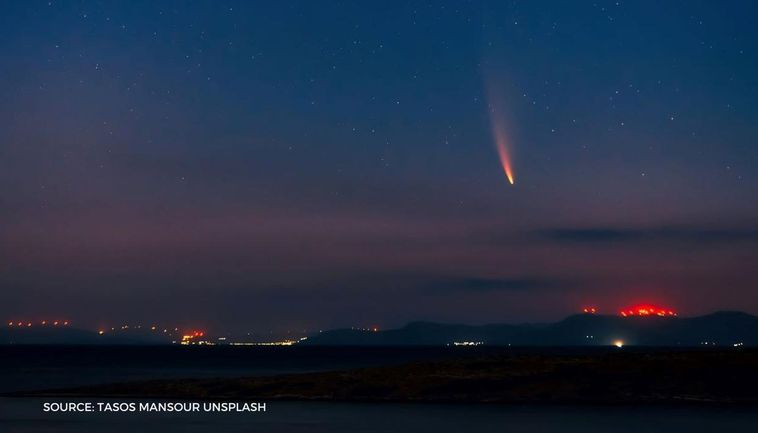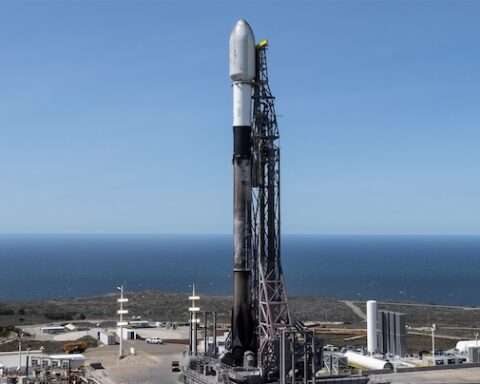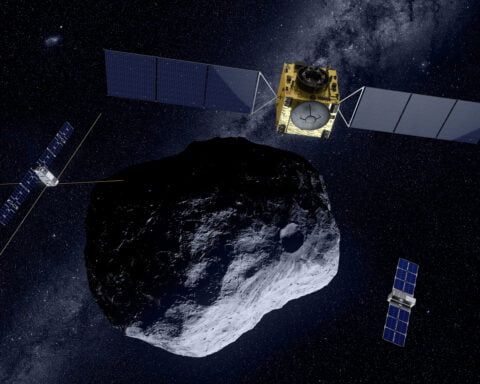The meteor created a giant fireball and looked like a big light show over the Vermont skies.
According to WMUR9, a Manchester, N.H., TV station, security footage from Burlington International Airport in Vermont captured the meteor around 5:38 p.m. and later over 100 reports from people in New Hampshire, Vermont, Massachusetts and Canada were made to the American Meteor Society.
According to NASA, the meteor, mostly likely a part of a larger asteroid, entered the atmosphere above Vermont and traveled at 42,000 mph before it broke up over the northern part of the state, while visible from Quebec, with the force of about 440 pounds of TNT, resulting in the noise.
The object itself was about the size of a bowling ball, according to researchers.
As reported by NASA, the meteor smashed through the atmosphere at a speed of approximately 42,000 miles per hour (68,000 kilometres per hour). The meteor looked like a very bright large fireball and appeared over the northern part of Vermont at 5:38 p.m. EST. A Vermont based local news station received calls where callers said that they heard a very loud boom and body rattling vibrations as the meteor passed over their areas.
NASA estimates based on eyewitness accounts that the meteor initially appeared 52 miles or 84 kilometres over Mount Mansfield State, east of Burlington. The meteor then travelled through the sky for 33 miles (53 km) northeast, heading towards the Canadian border. The meteor disappeared 33 miles (53 km) over the ground at the south of Newport. As per NASA the loud boom and vibration that the meteor caused as a result of the meteor getting fractured due to the atmospheric pressure. As the 4.5 kg sped through the atmosphere at a very high speed, pressure built up in front of the space rock and a vacuum behind it, resulting in the meteor getting torn to pieces and causing a meteor shower.
“The space rock fragmented violently, producing a pressure wave that rattled buildings and generated the sound heard by those near the trajectory. Such a pressure wave can also couple into the ground, causing minor “tremors” that can be picked up by seismic instruments in the area; the wave itself can be detected by infrasound (low frequency sound that can travel great distances) stations,” NASA said later on Facebook.
“It was dusk, so the sky was a deep blue, and I saw a bright red, orange and yellow streak to the north of me,” an eyewitness in Massachusetts wrote under the first NASA Facebook post. “I thought it must have been something much bigger than a standard ‘shooting star’ to be so visible when not totally dark yet.”
What are Meteor Showers and How are they Caused?
Meteor showers happen when Earth in its orbit passes through leftover debris from the comets that have broken up. While the earth’s orbit around the sun if pretty much fixed, comets have an elliptical orbit and often end up very close to the earth’s orbit or enter the atmosphere. The inside of a comet is made up of icy materials and loosely attached rocks. When comets come into the earth’s atmosphere they break up into tiny pieces due to friction and heat and that’s what causes the bright meteor show. The debris completely burns up in the atmosphere if it’s small or lands on the surface of the Earth if the size of the meteor is large enough.
Around 50 tons of meteor material enters the atmosphere and burns up quickly every day without incident, according to researchers.






